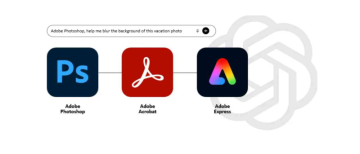Today, we’re looking at some exciting new solar panel technologies that are really starting to make waves. Forget the hype – let’s look at what’s actually changing the game and what it might mean for folks like you and me.
New Solar Panel Technology That Is Changing the World
The solar industry isn’t standing still; it’s moving fast. You hear about new breakthroughs all the time, but which ones actually matter? We’re seeing progress that promises more efficient, affordable, and versatile solar power. Think better performance, lower costs, and ways to use solar in places you wouldn’t expect. Let’s break down the key advancements from the past year or so.

Why Keep an Eye on New Solar Tech?
So, why should you care about these developments? It boils down to a few key things:
- Better Bang for Your Buck: New tech often means higher efficiency – getting more power from the same (or smaller) space. This can lead to lower energy costs over the system’s life.
- Lower Upfront Costs: Innovation in materials and manufacturing helps drive down the price of panels and installation. Making solar more accessible is always a good thing.
- More Options: Technology like transparent or flexible panels opens up solar for buildings or situations where traditional panels just wouldn’t work.
- Durability & Reliability: Improvements aren’t just about power; they’re also about making panels last longer and withstand the elements better.
Keeping up with this stuff helps you make smarter choices when you decide to invest in solar.
The Big Players: Top Solar Tech Advancements
Based on what we’ve seen recently, here are five key areas of innovation that are really pushing things forward:
Perovskite-Silicon Tandem Cells: Pushing Efficiency Limits
You might be hearing more about perovskites. These aren’t replacing silicon entirely, but they’re being combined with it in what’s called "tandem cell":
- What they are: Imagine layering a special perovskite material on top of a standard silicon solar cell. The perovskite grabs the high-energy part of sunlight, and the silicon catches what passes through. It’s like a two-stage system for capturing more light.
- Benefits: The big win here is efficiency. These tandem cells have blown past the theoretical limits of silicon alone, with lab results hitting nearly 35%. That’s a significant jump! They might also be cheaper to make eventually, using simpler techniques like printing.
- Current status: Efficiency records are being broken regularly by companies like LONGi Green Energy (34.6%) and JinkoSolar (33.84%). We’re even seeing the first commercial shipments, like Oxford PV’s panels heading to a utility project in the US. Oxford PV also showed off a residential-sized panel hitting 26.9% efficiency.
- Challenges: It’s not all smooth sailing. Perovskites aren’t as tough as silicon yet; they don’t like moisture or oxygen much and can degrade faster. Many current versions also use lead, which raises environmental questions, though research is on for safer alternatives. Getting consistent quality in mass production is another hurdle.
Tip for Homeowners: While exciting, perovskite-tandem panels are still mostly in early stages or for large projects. Keep an eye on them, but standard high-efficiency silicon panels are likely your best bet for home installation right now. Their durability is proven.
Bifacial Panels: Catching Sun From Both Sides
This is a technology that’s already making a big impact, especially in large solar farms.
- How they work: Simple concept – these panels have solar cells on both sides and a clear backsheet instead of an opaque one. They capture direct sunlight on the front and reflected light (albedo) bouncing off the ground or roof onto the back.
- Benefits: More energy! Depending on the surface below them, they can generate up to 30% more power than a single-sided panel of the same size. They work great over snow, sand, or light-colored rooftops. This extra juice can lower the overall cost per kilowatt-hour you generate. Many also use a dual-glass design, making them quite durable.
- Adoption: Utility companies love these. In the US, almost 40% of new large-scale solar projects in 2024 used bifacial panels. They’re becoming more common for commercial roofs too.
- Challenges: You need to install them correctly, usually raised higher off the surface, to let light reach the back. The gain depends heavily on how reflective the surface underneath is – dark asphalt won’t help much. They might cost a bit more upfront than standard panels.
Vitaliy’s Take: I installed a small set of bifacial panels on a ground mount over gravel at my place a couple of years back. Comparing them to identical single-sided panels nearby, I consistently see about a 10-15% boost in production, especially on bright, clear days. It’s noticeable. The key was ensuring they were mounted high enough for the light to get underneath.
Transparent & Building-Integrated PV (BIPV): Solar Where You Least Expect It
Imagine windows that generate electricity or roof tiles that are actually solar panels. That’s the idea behind transparent solar and BIPV.
- The tech: This uses materials like special conductive oxides or organic photovoltaics (OPV) that can be see-through to some extent. BIPV involves designing solar cells directly into building materials like shingles, facades, or skylights. Korean researchers even developed a fully transparent cell using materials like titanium dioxide.
- Benefits: The main appeal is aesthetics and integration. You can add solar power without bulky panels sticking out, which is great for historical buildings or designs where looks matter. It opens up huge surface areas on buildings in cities for power generation. Some tech even works well in low, indoor light to power small devices.
- Current status: Efficiency is climbing but still generally lower than traditional panels. There’s often a trade-off: the more transparent, the less power it generates. We’ve seen transparent tandem cells hit 12.3% efficiency and transparent silicon reach 15.8% in the lab. Companies like Ambient Photonics are making indoor solar cells for smart home gadgets.
- Challenges: Efficiency is the big one. Getting high transparency and high power output is tough. Cost-effectiveness compared to standard panels is also a factor, especially for large areas.
Tip for Innovators: While maybe not ready for your whole house roof, transparent solar could be interesting for things like patio covers, greenhouses, or even powering outdoor lighting integrated into glass railings. Think outside the box!
Flexible & Printed Solar: Powering More Than Just Roofs
Think solar panels you can roll up or shape around curves.
- Materials & Methods: These typically use thin-film materials (like amorphous silicon, organics, or perovskites) applied to flexible backings like plastic or metal foil. A promising manufacturing method is roll-to-roll printing, like a newspaper press, which could make production very fast and cheap. Perovskites can be made into inks perfect for this.
- Benefits: They’re super lightweight and adaptable. This makes them ideal for things traditional rigid panels can’t do: integration into clothing, backpacks, tents, vehicle roofs (think RVs or maybe even extending EV range slightly), or temporary structures.
- Current status: Efficiency is improving. Australia’s CSIRO achieved 11% efficiency on large printed flexible cells. But generally, they still lag behind rigid panels in power output. Research focuses on boosting efficiency and making them last longer.
- Challenges: Efficiency and durability are the main hurdles compared to standard silicon panels. Thin films can degrade faster, especially when flexed repeatedly.
Smart Solar (AI & IoT): Making Solar Smarter
This isn’t about the panels themselves, but the systems controlling them.
- The tech: It involves integrating Artificial Intelligence (AI) and the Internet of Things (IoT). Think smart inverters that adjust power flow, AI software that predicts energy production and spots potential maintenance issues, and sensors monitoring everything in real-time.
- Benefits: This tech optimizes the whole system. It maximizes energy generation and use, potentially integrates better with battery storage, predicts when maintenance is needed (saving money and downtime), and helps stabilize the grid by managing distributed power sources better.
- Adoption: Smart features are increasingly common in residential, commercial, and utility systems. Integration with smart grids is a major focus. AI might even help design more efficient solar cells in the future.
- Challenges: Connecting everything raises data security and privacy concerns. Making all the different smart components work together smoothly can be complex. Initial costs might be higher, though the long-term savings should offset this.
Tip for Tech Enthusiasts: If you love data and optimization, look for solar systems with robust monitoring platforms and smart home integration. Understanding your energy production and usage patterns is key to maximizing savings.
What Does This Mean for You (the Homeowner)?
Okay, lots of tech talk. How does this translate to the average Canadian homeowner thinking about solar?
- Efficiency Matters: Higher efficiency panels (like advanced silicon, or eventually tandem cells) mean you might need fewer panels, or can generate more power from limited roof space. This is key in dense urban areas.
- Cost Trends: While new tech can be pricey initially, the overall trend driven by innovation and scale is downward for solar costs. Waiting for the absolute cheapest price might mean missing out on savings now, but it’s good to know costs are generally becoming more favorable.
- Reliability is King: For most homeowners, proven reliability is crucial. While things like perovskites are exciting, established technologies like high-efficiency mono-silicon or bifacial panels (if suitable) offer decades of proven performance.
- Niche Applications: Flexible or transparent tech might solve problems for specific situations – like a curved roof, a desire for integrated aesthetics, or powering off-grid devices.
Vitaliy’s Take: My Experience & Honest Thoughts
Having been around solar and home improvement for 12 years, I’ve seen technologies come and go. My advice? Focus on proven value. When I review solar companies for SolarEnergies.ca, I look past the flashy brochures. Does the installation process make sense? Are they using quality, reliable components? Do the long-term savings projections seem realistic?
I remember early thin-film panels that promised flexibility but degraded much faster than expected. Lessons learned! That’s why, while I track innovations like perovskites closely, for my own home and for most recommendations today, I lean towards high-quality, high-efficiency silicon panels from reputable manufacturers. Bifacial panels offer a solid, proven boost if your site conditions are right. Smart monitoring is also becoming standard and is definitely worthwhile for tracking performance.
The goal isn’t just to have the newest gadget; it’s to have a system that reliably saves you money and reduces your environmental impact for decades.
Looking Ahead: The Solar Horizon
Experts agree: solar is going to keep growing, fast. Technology will keep improving efficiency and driving down the levelized cost of energy (LCOE) – basically, the cost per unit of energy generated over the system’s lifetime. Tandem cells have the potential to really accelerate this. Bifacial panels are already mainstreaming in large projects. Transparent and flexible tech will likely find more uses as they mature. And smart tech is essential for managing it all effectively on a large scale.
Here’s a quick comparison of where these techs stand:

(Data based on research findings April 2024-April 2025)
Wrapping Up
So, there you have it – a quick rundown of some major solar tech developments. From tandem cells chasing record efficiencies and bifacial panels soaking up extra sun, to see-through panels, flexible cells, and smarter systems, innovation is pushing solar forward.
For homeowners in Canada right now, the best bet is usually still well-made, high-efficiency silicon panels, possibly bifacial if your site works for it. But keep an eye on these advancements! As they mature and costs come down, they’ll offer even more ways to harness the sun’s power.
Got questions about what makes sense for your home? That’s what we’re here for at SolarEnergies.ca. Just honest advice to help Canada go solar.






















